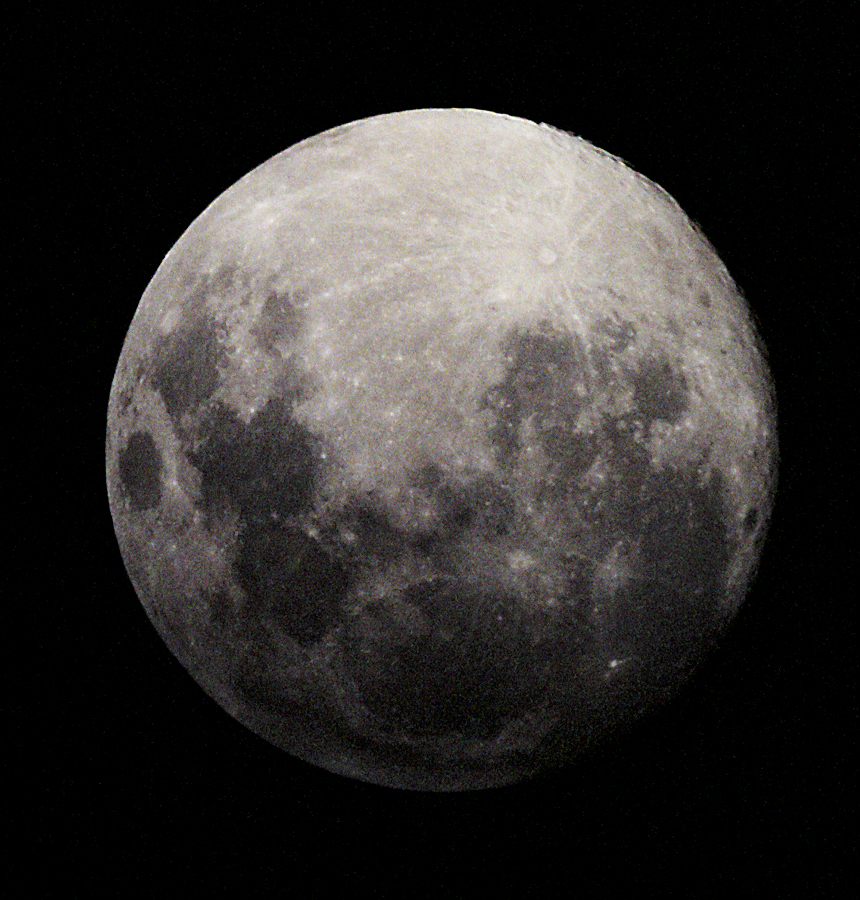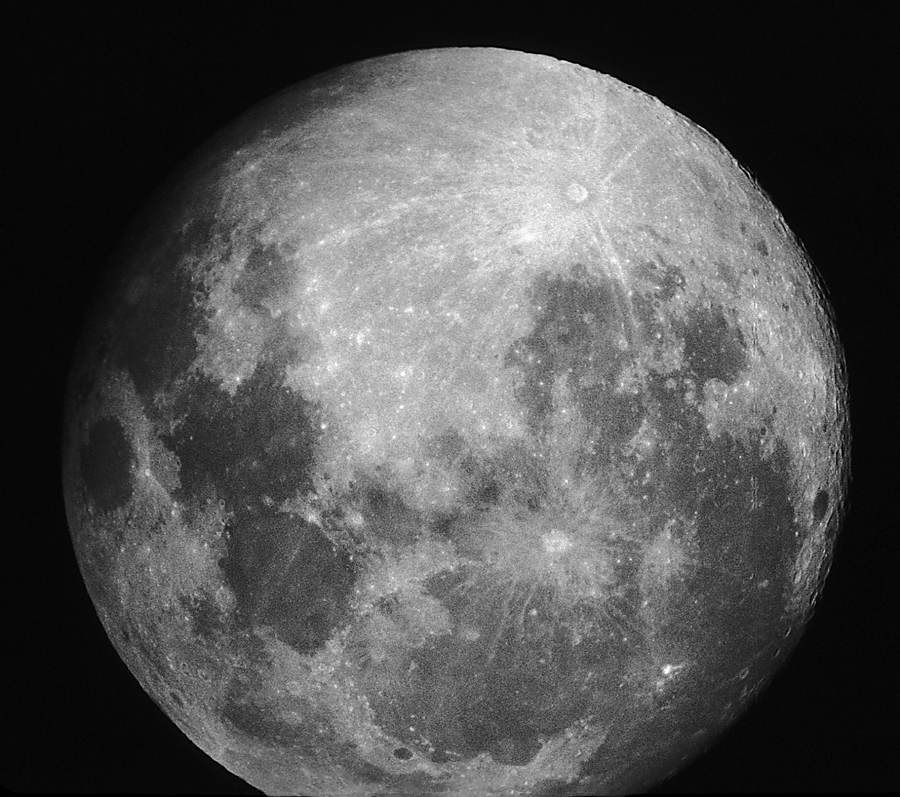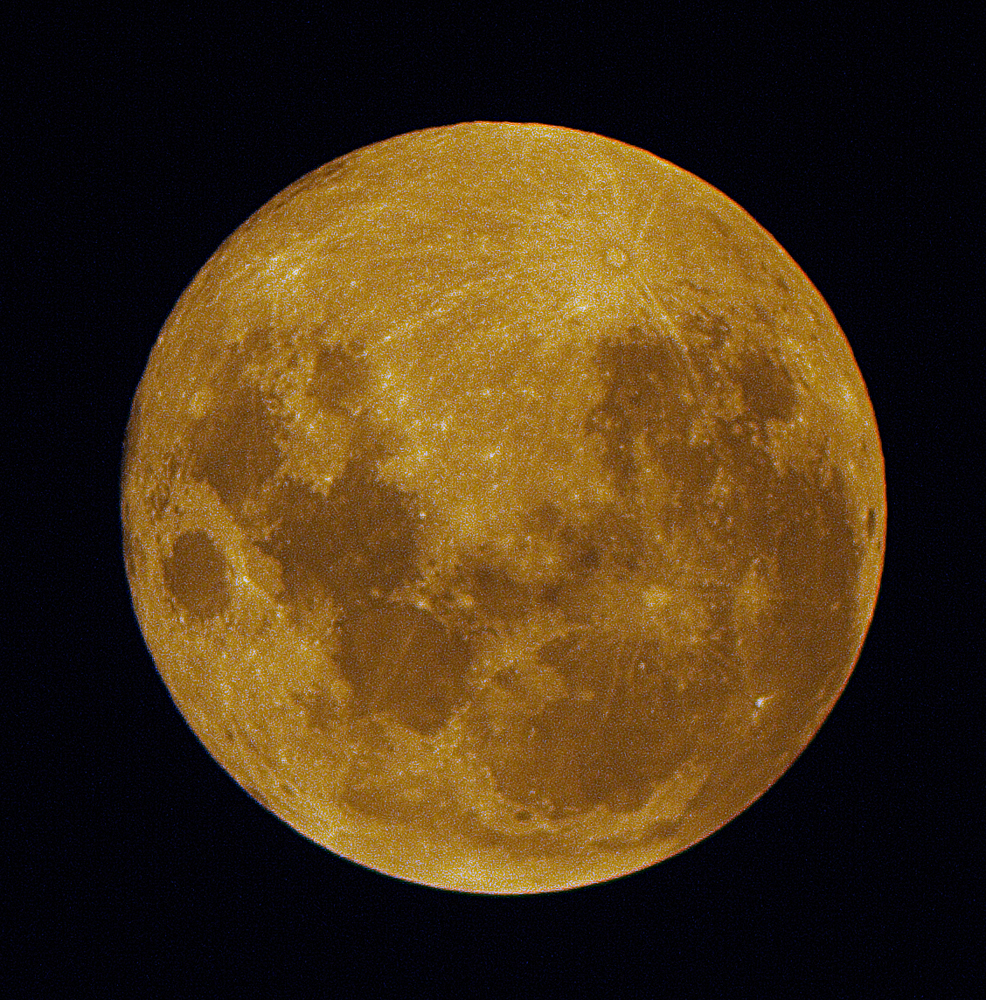
1/1000 second exposure, Fuji Super HG V 400 film.
12.5" f/6 newtonian telescope at prime focus.

The full moon is generally considered to be a big pest! Being so bright that it drowns out all of the "faint fuzzies" that deep-sky observers love to hunt. However, it is not all bad. After all, it does generally ensure clear skies!!!!
Jokes aside, it can be fun looking at the full moon. There are a number of features such as the crater rays that are best observed at this time. The appearence of familiar features from earlier times in the lunar cycle, now appear very different. Some small, formally insignificant craters now appear as bright circles. Other formally prominent craters such as Clavius, are now almost invisible. It is also the only time for learning the appearence of the craters in preparation for timings during a lunar eclipse.

